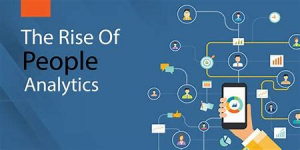 An increased number of organizations are moving away from the annual review process to a feedback process that incorporates more frequent or real-time feedback. How frequent the review process depends on the scale, culture, and needs of the organization. Although the process sounds simple enough, there are a number of considerations to be debated prior to implementing this type of change, from systems and platform changes to training associated with the new process.
An increased number of organizations are moving away from the annual review process to a feedback process that incorporates more frequent or real-time feedback. How frequent the review process depends on the scale, culture, and needs of the organization. Although the process sounds simple enough, there are a number of considerations to be debated prior to implementing this type of change, from systems and platform changes to training associated with the new process.
Quarterly Feedback
Some companies choose to take an interim step between annual reviews and real-time feedback. Enter the quarterly review. Quarterly reviews can be as simple as creating a comment box where each of the managers composes a brief summary of accomplishments for the preceding quarter or as complex as an annual review process, with ratings against core competencies, and comments for each conducted quarterly instead of annually. Whether simple or complex, this process alleviates the employees’ common concerns around being surprised at the end of the year with feedback that they had never heard.
Real-time Feedback
The end goal in giving real-time feedback is to be able to provide continuous feedback to the employee so they can course correct in real time. Normally this will be a two-way street where the manager can give feedback and the employee can ask for feedback on a specific project. Many real-time systems will also provide an avenue to create Individual Development Plans ( IDP’s) in conjunction with the feedback to address any skill gaps that are identified so that training needs can be identified and a plan built to address
360 Feedback
Moving to 360 feedback, which entails feedback coming from the employee’s manager; peers; and subordinates, and is the most comprehensive of the feedback systems. 360 reviews should never be introduced without a training plan that encompasses all levels of the organization. Employees need to be coached on how to solicit feedback, how to give appropriate feedback and how to handle the feedback once it is received. Criticism that is not truly constructive and offered with a pure heart, is almost never internalized.
Compensation
Organizations are frequently perplexed when it comes to implementing compensation reviews without an annual rating process that drives a matrix to calculate the percentage increase earned. After all, pay is one of the primary reasons employees show up to work each day. If you’re fundamentally redesigning how you determine their pay, then you need a clear plan that’s clearly communicated. Many organizations have moved to a simplified approach where each manager is given autonomy to make pay decisions. Each manager is allocated a budget and is responsible for determining the pay/bonus of direct reports.
Ultimately, whichever review process and compensation model you choose to implement, your people leaders need to be trained to take an increasingly more active role in the management of their teams. They need to understand that managing their people to be the best they can be is fundamentally what leadership is all about!


